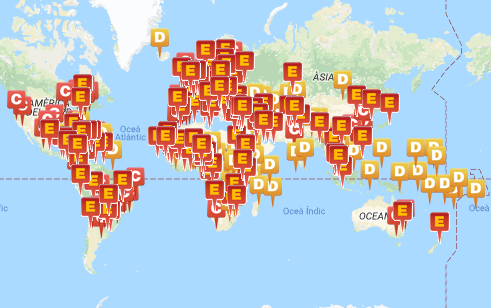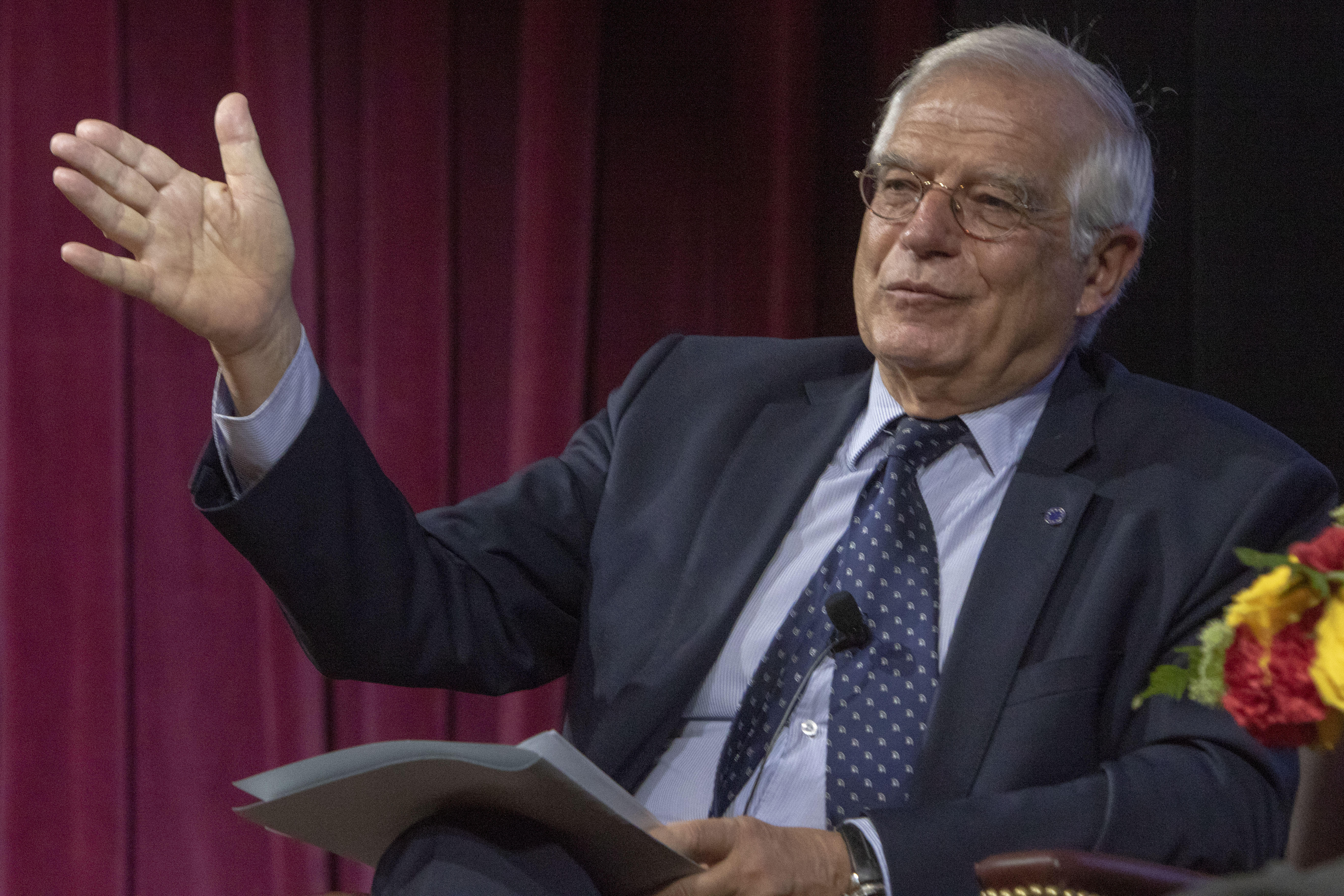"I'd like to have the means and resources of Diplocat". Diplocat, the Public Diplomacy Council of Catalonia, part of Catalonia's international efforts. These aren't the words of the owner of a small business or a modest foundation, they're the words of none other than the Spanish foreign minister, Josep Borrell. According to the PSOE politician, Catalonia has beaten Spain in explaining its "account" of the independence movement internationally, thanks to the resources Diplocat had before being "liquidated" using article 155 of the Spanish Constitution.
Borrell's words fall flat. It seems implausible that a consortium like Diplocat could have more resources that the foreign ministry of Spain, the Eurozone's fourth-largest economic power. In fact, a simple glance at the figures disproves the comment. Diplocat received 2.3 million euros (£2.1 million; $2.7 million) in the Catalan government's 2017 budget, whilst the Spanish foreign ministry's budget for 2018 is 1,182 million. That's over a billion euros more.
In fact, Borrell's department spends 2 million per month on rent alone for the embassies, consulates and official residences of its representatives. In other words, for just one month's rent, the Spanish government already spends almost the entire total yearly contribution from the Catalan government to Diplocat.
For just one month's rent, the Spanish government already spends almost the entire total yearly contribution from the Catalan government to Diplocat
Diplocat is a public-private consortium which enjoyed, until last October, participation from groups from civil society to footballers like Xavi Hernández. That said, its principle source of funding is the Catalan government. Its work centred on carrying out basically academic diplomacy, giving presentations to think tanks and establishing contacts with politicians in other countries. Among its main objectives was to spread the right to self-determination. It was "liquidated" by the Spanish government when it intervened in Catalonia last autumn following the independence referendum; the Catalan government started the process of restoring it in July.
Nor can the budget for the Catalan foreign ministry hold a candle to its Spanish counterpart. Specifically, Catalonia spends 18 million euros a year for the purpose, including the money for Diplocat. To put it another way, each Catalan pays little more than 2 and a half euros a year for Catalonia's international strategy, whilst each Spaniard pays as much as 25 euros a year for the foreign ministry.
200 countries vs 11
What's more, the reach of the two sides is incomparable. Diplocat, before it closed, had fewer than twenty permanent staff. The Spanish diplomatic corps is represented in almost 200 countries and has 182 ambassadors, as well as consuls and all other staff members: ministers, counsellors, secretaries, attachés... In one embassy alone, dozens of people can work.

Map of Spanish representations abroad. The different letters represent different categories of embassies (D, E) and consulates (C).
On the other hand, the Catalan government, before the application of article 155, had representation in twelve countries, all of them very modest. The countries in question were France, the UK, Germany, Austria, the USA, Italy, Portugal, Denmark, Switzerland, Poland and Croatia, with another in Brussels for the EU, the only one kept open after article 155 was enacted, despite its delegate being dismissed. There were some 50 staff in the delegations, including the delegates. That's 50 people spread over all twelve countries.
Les 12 Delegacions de la Generalitat de Catalunya al món: l'ampliació d'aquesta legislatura pic.twitter.com/yMDeOFvPOE
— Exteriors Catalunya (@exteriorscat) 31 de agosto de 2017
The Catalan government has proposed reopening these offices and, on 26th June, passed the order to bring back the delegations to Germany, Italy, the UK and Ireland, France, Switzerland and the USA. The one in Berlin was inaugurated this week; it will be London's turn next week. The Catalan ministry, headed by Ernest Maragall, also plans to open representations in the Nordic countries, the Balkans, China and the Middle East.
What do Spain's embassies cost?
As we noted before, the cost of rent alone for Spain's embassies, consulates and official residencies abroad reaches 24 million euros a year. And some of the individual properties are particularly notable in terms of size or cost. An example is the one in Moscow, which costs 141,486 euros per month, or New York, at 85,133€/month.
The stratospheric expenses, however, don't end there. The embassy building in Paris, for example, covers 14,450 square metres (160,000 sq ft) and the cost of its maintenance, along with that of the ambassador's residence and Spain's permanent delegation to the OECD, reaches 331,825 euros per year, according to the ministry's own figures (in Spanish). That's 27,652 euros a month.
El ministeri d'Exteriors va gastar 48.487 euros en una catifa per al menjador de gala de l'ambaixada davant el Vaticà
These aren't the only costs which stand out. In 2016, just to maintain its embassies' gardens, the foreign ministry spent 60,536 euros in Berne and 62,920 in Rome. The same year, it spent 48,487 euros to supply "a hand-woven knotted pile carpet for the gala dining room" of the embassy to the Holy See. When it comes to furniture, 20,507 euros were spent for the delegation in Bogota, 34,536 for Rio de Janeiro. It also undertook renovation works on its property in Bangkok to a total of 527,927 euros.
The most scandalous, however, is the Spanish embassy in Riyadh, which has a swimming pool whose maintenance, along with that of other electrical and mechanical installations, costs 96,000 euros a year.
Another detail: in 2016, the ministry spent 72,479 euros providing flags and flagpoles to its offices abroad.
How much does an ambassador earn?
Although the Spanish government has a transparency website, the real earnings of its ambassadors are a ministry, since those posted online (in Spanish) don't include bonuses or supplements. Whilst the average base salary is around 60,000€ per year, with add-ons it can reach 120,000. It also should be noted that all ambassadors have residences provided and paid for in their destination countries for them and their families.
These add-ons are paid to bring the salary in line with the quality of life in the destination country and to compensate for matters like distance, unhealthy conditions and violence in the country. In the case of the ambassador to Australia, for example, the base salary is 58,867 euros, but with all additions this reaches almost 120,000.
In short, the Spanish diplomatic service has a very powerful, huge structure, nothing akin to the modest Catalan efforts. Not in terms of luxuries nor in terms of expense. Indeed, Catalonia spends 1.58% as much as Spain.

